Cobblestone Universalist Church – Childs, NY
The oldest cobblestone church in North America is now a museum in Orleans County. The Cobblestone Universalist Church is an anchor attraction within the Cobblestone Historic District in the town of Childs.
by Chris Clemens
When we were visiting the Pullman Memorial Universalist Church in Albion, we hung out with Bill Lattin for our tour. What we didn’t fully understand before meeting him, is that Bill is the quintessential knowledge base on Orleans County.
Many churches have appointed historians, and when we were put in touch with him, I assumed that was Bill’s role. He’s humble in his own description of his work as “Orleans County Historian”. It appears though, that he has played a leading role in advocating for everything historical in the entire county. He’s been at it for over four decades.
While we chatted at Pullman, it became more and more obvious that Bill doesn’t do his job–he lives his job.
I’m always grateful to anyone volunteering their time to answer our constant questions. We occasionally get to meet someone who invites us to do more than we originally set out for. We’re always surprised and grateful for the hospitality folks have shown us while doing this project. Bill Lattin is precisely one of those people.
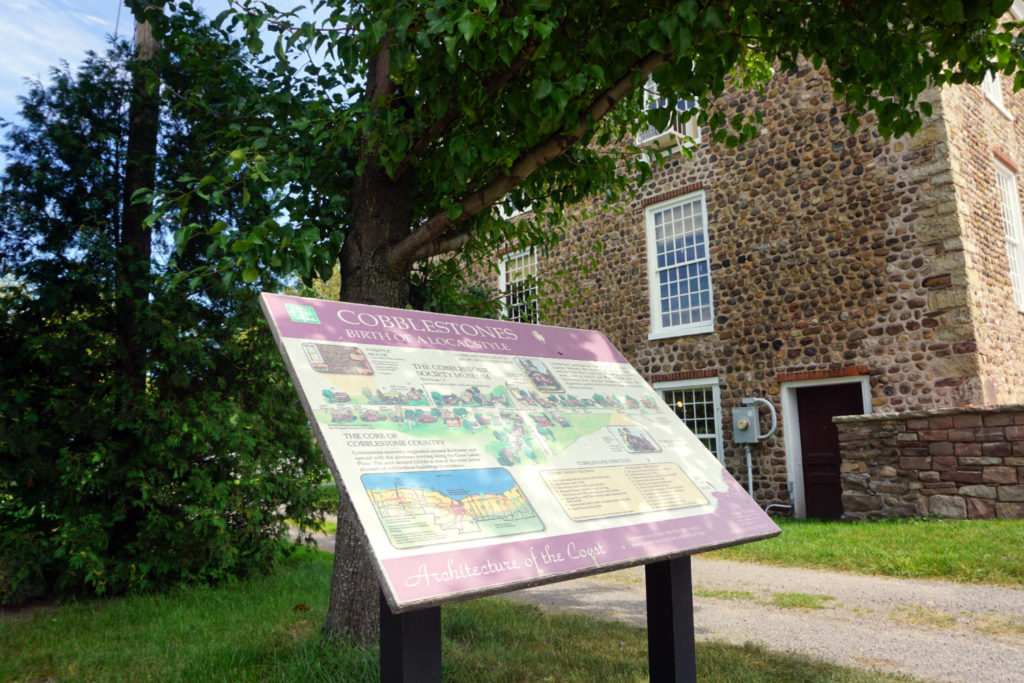
Next Destination
While sharing the history of the Pullman he mentioned another church. He said, “Well, you know this congregation actually was one that migrated here from the congregation up the road right? The old Cobblestone Church on Rt. 104 in Childs?”
We both knew the church he meant because occasionally on our trips west of Rochester we’ll take the scenic Rt. 104 instead of going the thruway. We’ve passed the Cobblestone Church a few times and taken note of it, but hadn’t got further than that. Bill continued, “Well, if you want to see that we can go–I have a key!”
It seemed that Bill was happy to continue sharing with us the history of both his congregation and Orleans County. We wrapped up at Pullman and headed north to the town of Childs.
Some Western NY History
The area that is now Orleans County was visited by local Native Americans, but there was only one settlement. Most just came for hunting purposes and stayed away from the nicknamed “Sick Country”.
Just a couple years after the start of the 19th century, the area saw it’s first permanent residents who purchased the property from the Holland Land Company. The stretch of land through the county around Ridge Road saw almost immediate development. Except, that development was quickly halted in 1813 when British troops burned the city of Lewiston to the west.
(Lewiston is also home to the Our Lady of Fatima Shrine which we visited last summer.)
The land had been purchased, but it wasn’t until 1826 that Orleans was separated from Genesee County and became it’s own entity. Just one year previous, one of the most important advancements in the history of NY state’s transportation system had opened, and people began traveling the Erie Canal back and forth and gaining access to other parts of the state with ease.
All this might seem like a lot of extraneous history to toss in, but it’s important to note that the Erie Canal was one of the reasons that the Burned Over District existed. People were able to get places quicker, and in turn, their ideas spread faster than ever, including ideas about religion.
The town of Childs sits perfectly on Route 104 (Ridge Road) and was originally to be the county seat and was the focus of a lot of development. The introduction of the Erie Canal usurped Ridge Road’s accessibility and Albion became the hotbed of settlements and commerce instead.
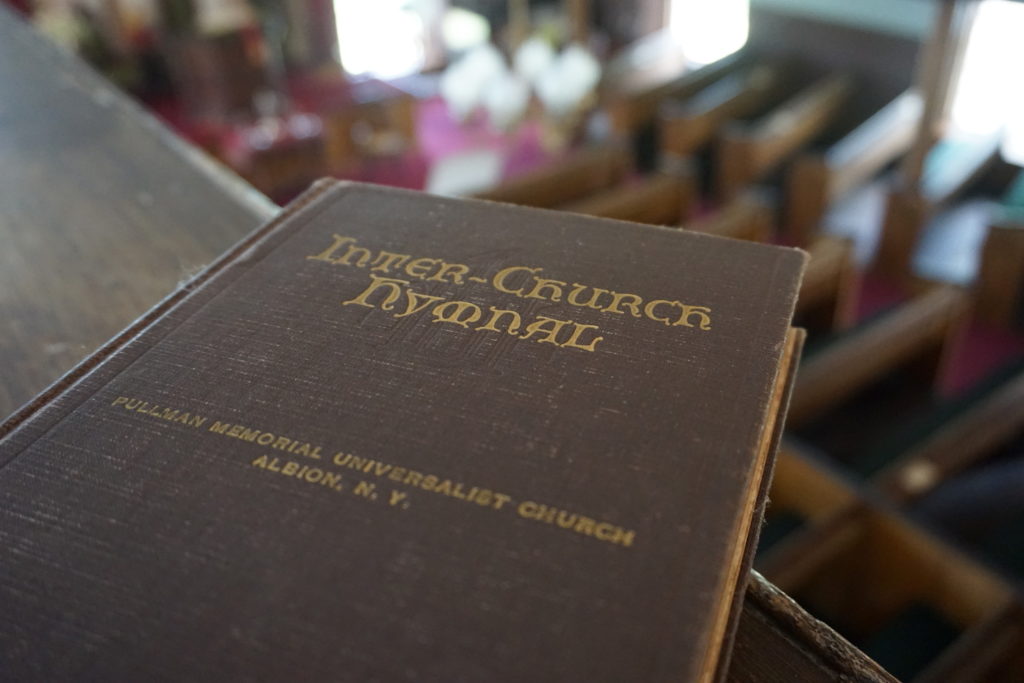
Cobblestone Church
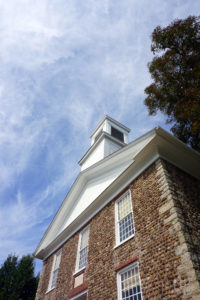
In 1834 when the local Universalists built their three-story, Federal architectural styled church, the cobblestone was a natural choice. At the time, cobblestone masonry was making popular use of the natural resources of the land.
Glacial movements that once scraped the land now known as Upstate NY left more than just a row of lakes. The moving ice acted as one gigantic rock tumbler and left the land littered with perfectly shaped smooth, round stones. These stones coupled with a limestone mortar turned out to be a perfect resource for construction.
Cobblestone masonry is found dating as far back as the mid-1700’s in other parts of New England. But, the region directly south of Lake Ontario ended up with the most buildings. Because of the availability of cobblestones and limestone, you can find a lot of cobblestone architecture here.
About 1,200 cobblestone buildings were contructed in North America but 90% of those are within a 75 mile radius of Rochester. The Childs Universalist Cobblestone Church is believed to be the oldest still standing cobblestone church in all of North America!
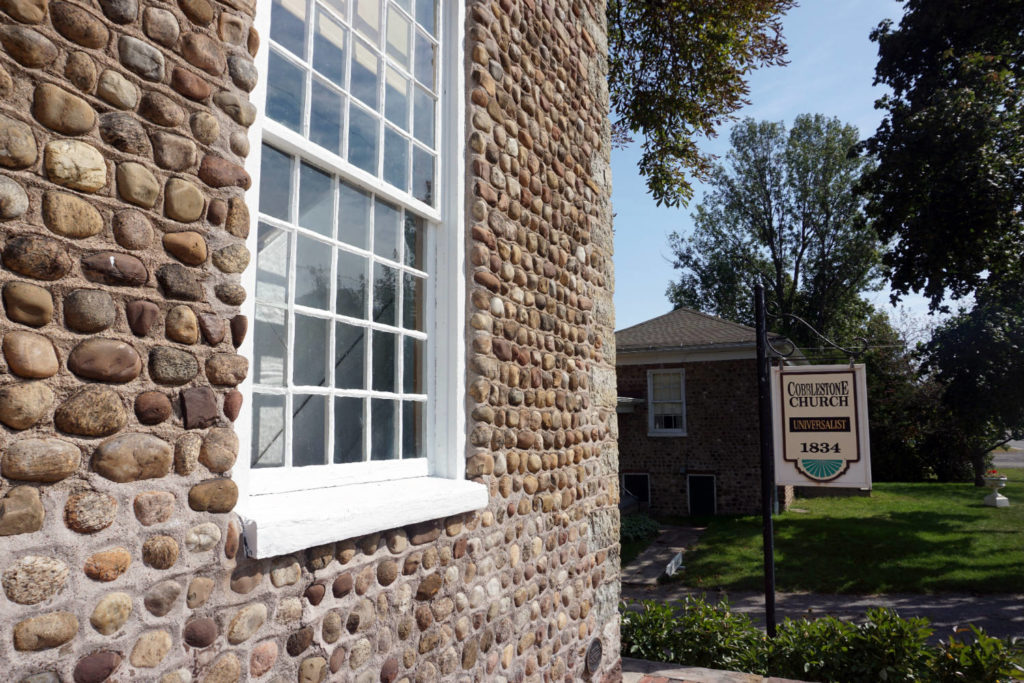
Cobblestone Exterior
Before we went in, Bill pointed out the cobblestone architecture and explained a lot of what I just shared. He helped identify some subtle nuances like striations in some of the stones. We never would’ve guessed it, but some of those striations are apparently fossilized worm feces!
He also mentioned a discussion he once had with a geologist while giving a tour. The geologist asked about his belief in the Bible before delving into the topic of cobblestones. Her concern was that if Bill was an Evangelical, he wouldn’t be able to fathom the true age of the fossils. These rocks are easily older than the 5,000 years the Bible claims the Earth is.
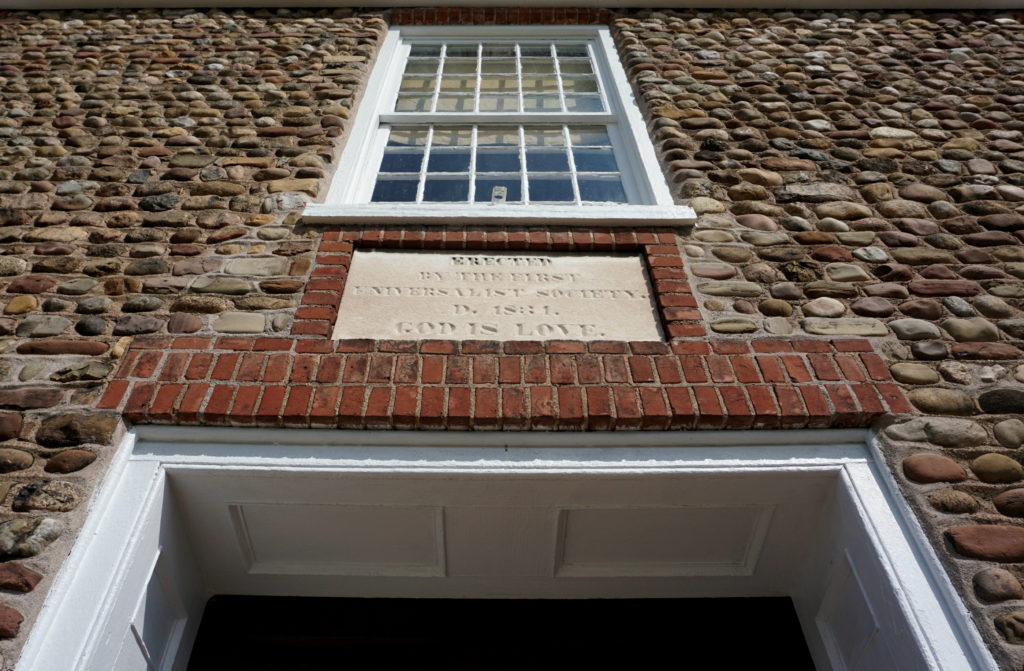
Interior Tour Of The Cobblestone Church
Walking in the front door of the church places you in a narthex like area. It’s flanked by a staircase on each side leading to the upstairs balconies. There are a few simple decorations like the original candle holders and their soot guards, too.
Another noteworthy piece in this area is a small unfinished room under the stairwell barely larger than a coat closet. It has removable commode that at this point, thankfully, is only for decoration.
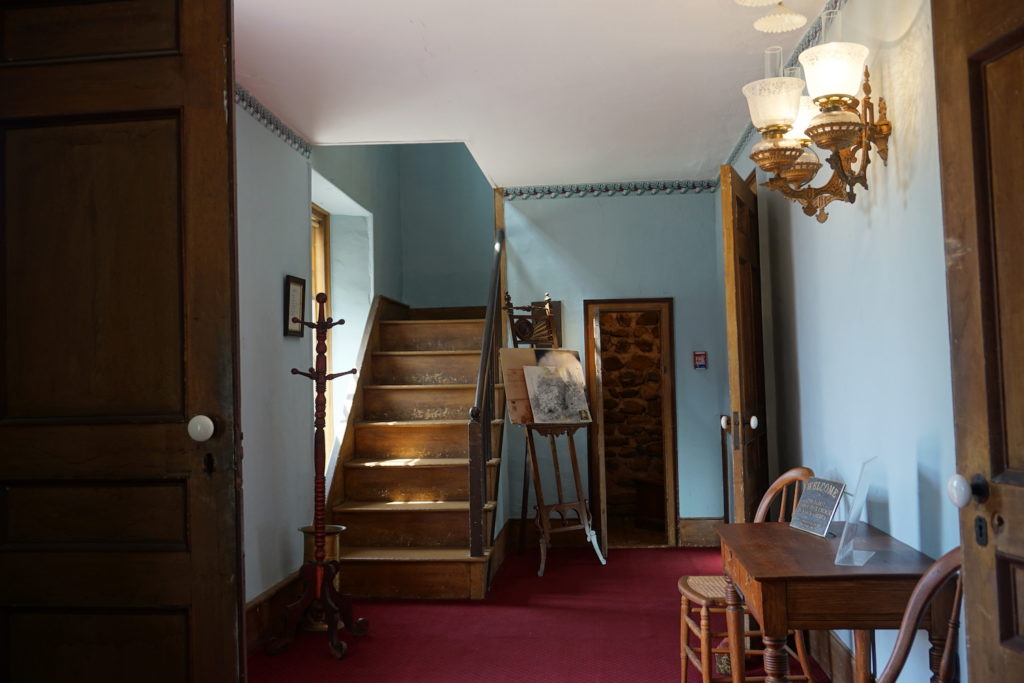
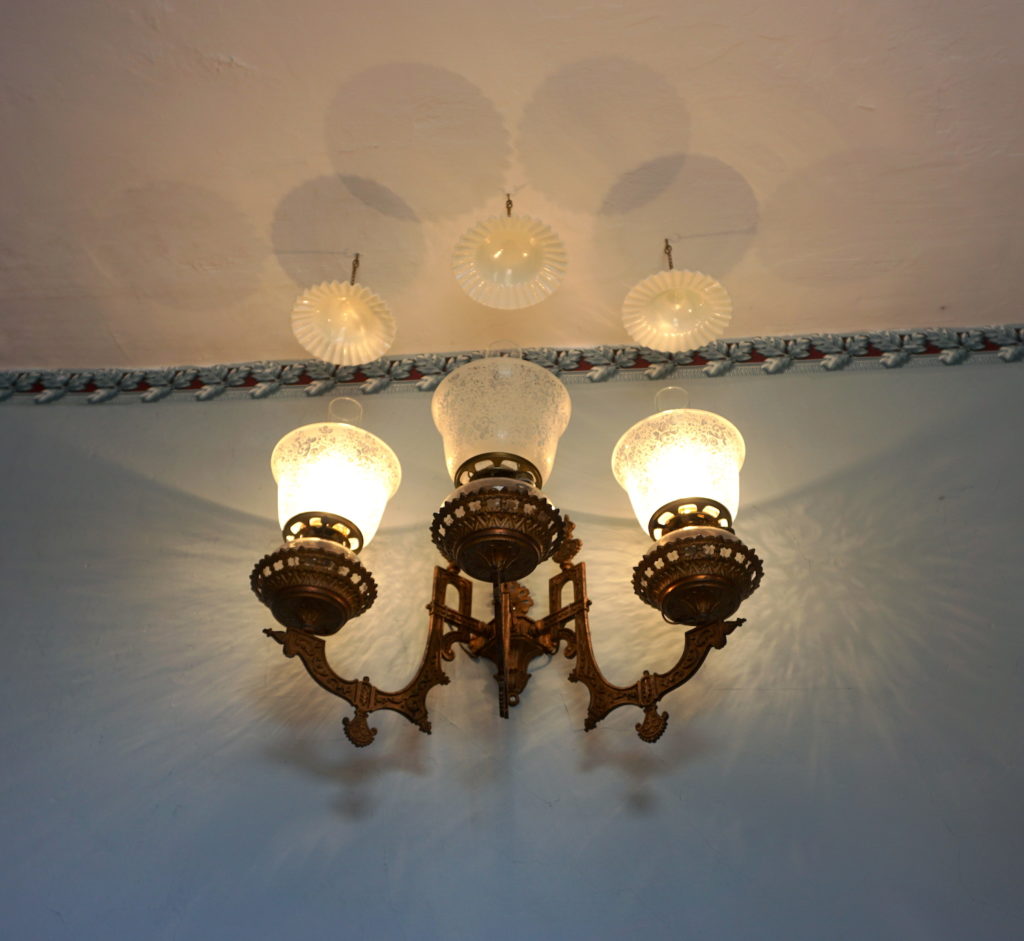
There are two doors from the narthex leading in to the sanctuary, and each door extends through the room as an aisle with pews on each side and in the middle.
Typically when walking in to a sanctuary the altar is at the very opposite side of the room, so that the eye is immediately drawn to it. The Universalists wanted to be as radical as they could, so they placed their altar on the first wall. This of course meant if you were late to church, the entire congregation was watching you! A stove pipe heating system was used, and that’s still not only in place, but hard to miss.
Unfortunately, it couldn’t contend with Upstate NY winters, and the congregation also used foot warmers that are basically iron boxes where someone could place coals, and you could set it at your feet–there is still one of them to check out.
The second floor has a balcony on each side and a small organ in the middle that is still used for some events. There are also a couple not-original-at-all air conditioners. The church is still used for quite a few weddings each year, and in the summer the cobblestone building benefits quite nicely from pumping in some cold air.
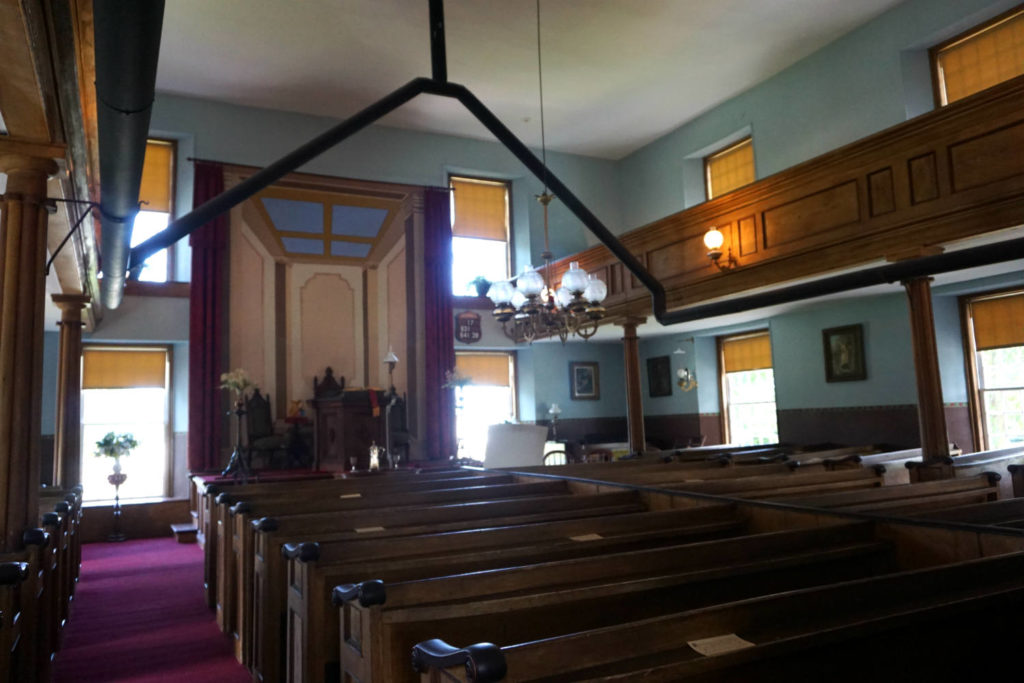
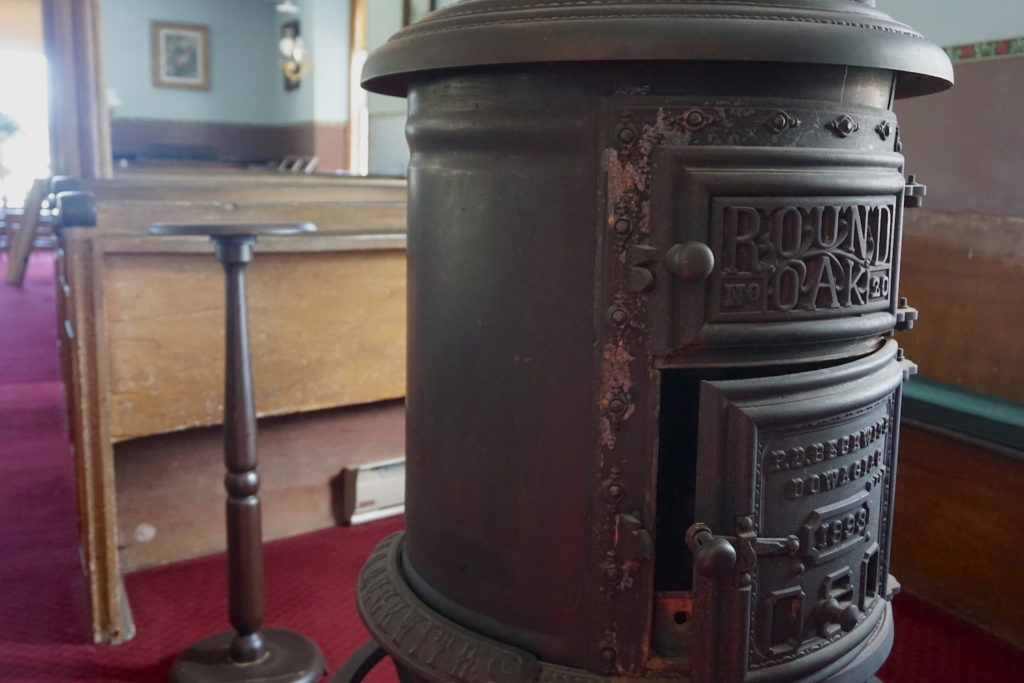
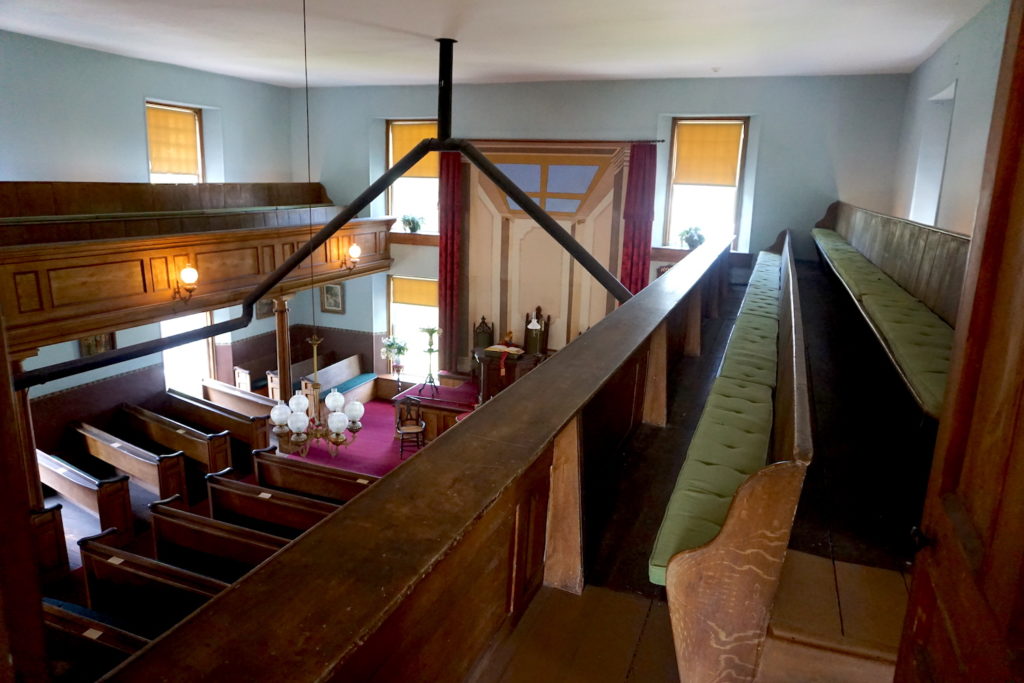

The Universalists Move Out
Once Pullman, a member of the congregation before moving to Chicago, built his church in Albion, the Cobblestone Church wasn’t as needed.
Due to some financial snafus, the church couldn’t actually be sold and it had to remain in use. The loophole though, was that it wasn’t legally determined how often. So, a few times a year the church would be reopened and a service would take place. The story sort of eludes me now, and I can’t find it anywhere online, but soon thereafter, the Presbyterians bought it and switched the pews around to face the ‘correct’ way.
After a number of years, they too outgrew the space and it sat unattended until becoming the museum it is today.
[Edit 3/19/13: The story eludes me because it doesn’t exist! I was a bit confused here on this last part and mixed up a couple stories. The Universalists owned this church from the time they built it until the time they turned it over to the Cobblestone Society. They were somewhat inactive in 1860’s, but in the 1870’s they returned and did make some renovations that included turning the pews around to face the other way. There were a few other denominations such as the Presbyterians that used the same practice of having the pews reversed, but I was wrong about them ever owning the property.]
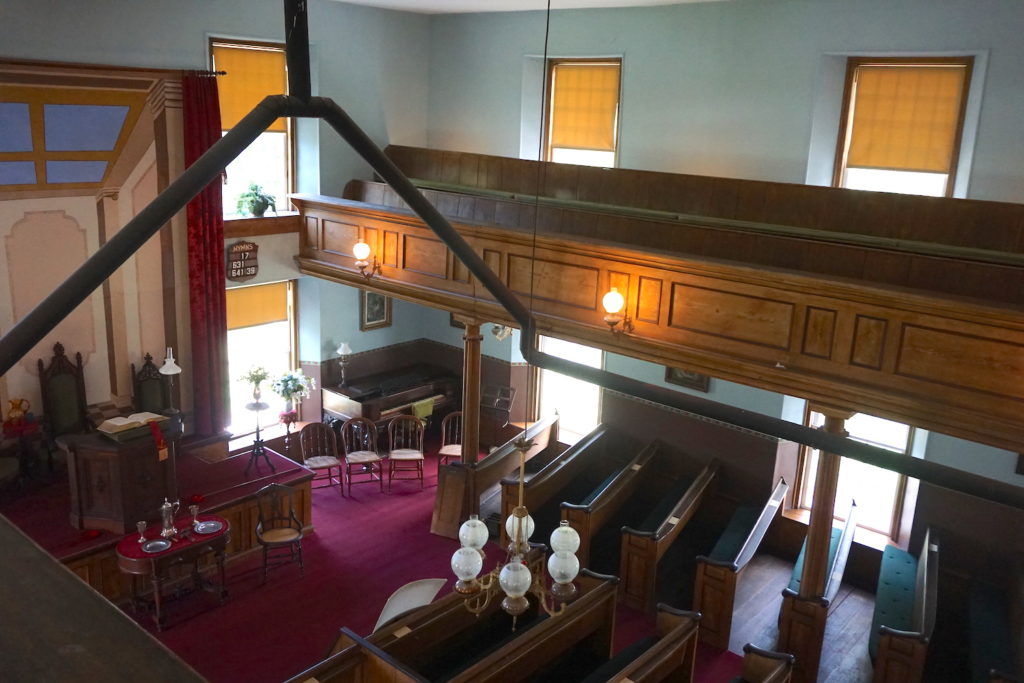
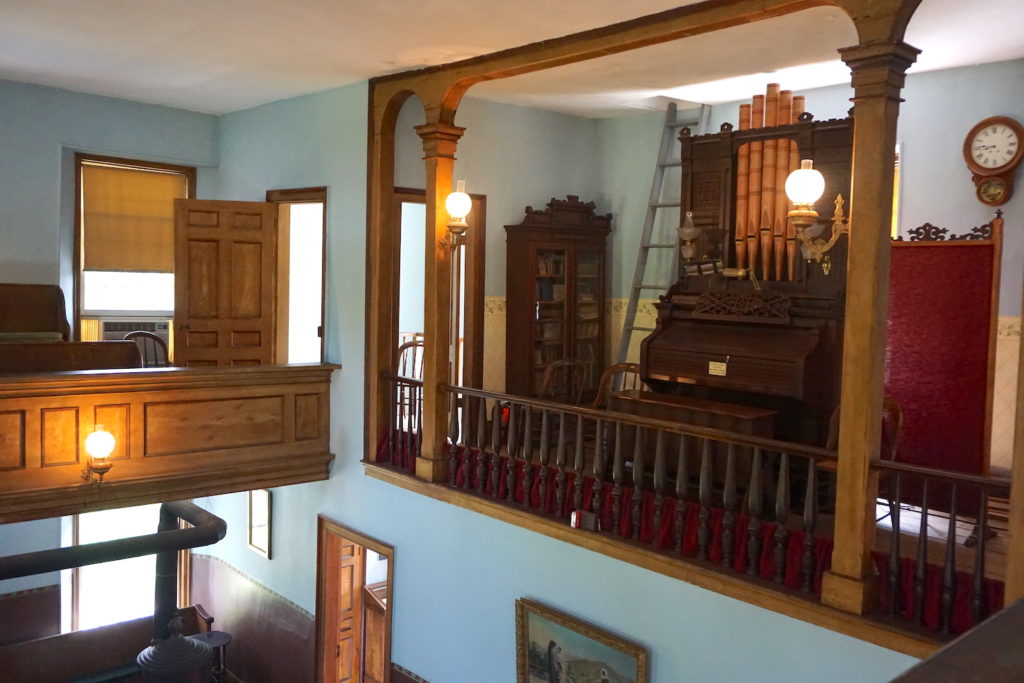
The Cobblestone Historic District
The Cobblestone Society was formed to preserve the building, including the other historic buildings that have been moved on site for a small historical compound/museum, and to educate any and all who are interested in seeing and learning more about the buildings.
Most of the places we visit are just as open to anyone else as they are to us (though make no mistake, lining up all the “access” we get is a LOT of work!), but this particular tour is very accessible, and worth going to check out one of their public tours.
I can’t guarantee you’ll get to see Bill, but I can guarantee you’ll get to see an incredible piece of religious, architectural, and Upstate NY history.
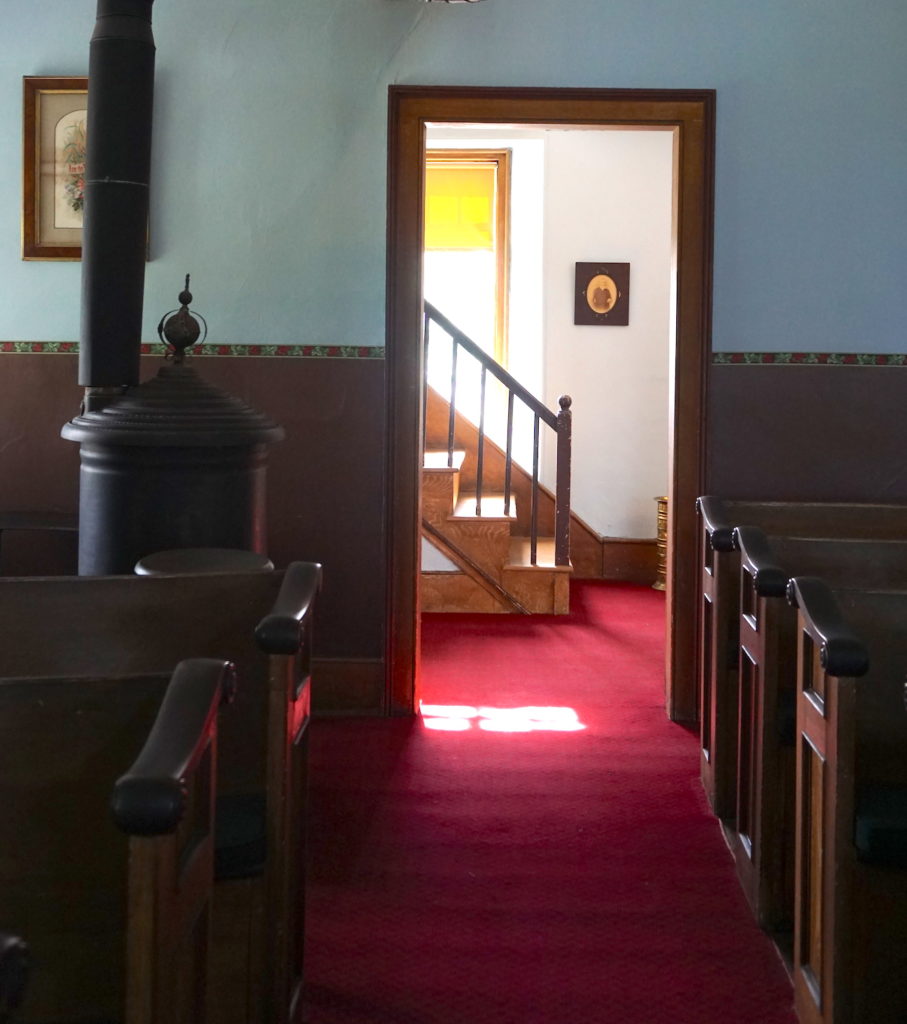
If you’d like to visit yourself and see a pretty spectacular piece of history in person, you can find their hours here: Hours & Admissions.
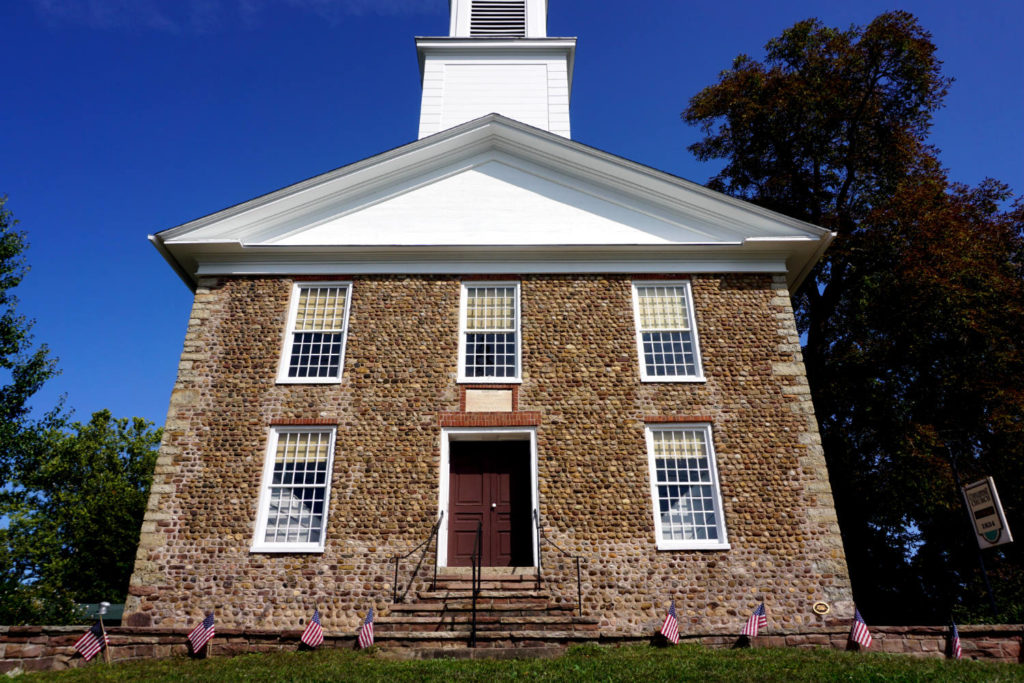
This post previously appeared on www.ExploringTheBurnedOverDistrict.com

Chris Clemens is the Founder/Publisher of Exploring Upstate. From his hometown in Rochester, he spends as much time as possible connecting with the history, culture, and places that make Upstate New York a land of discovery. Follow him on Twitter at @cpclemens

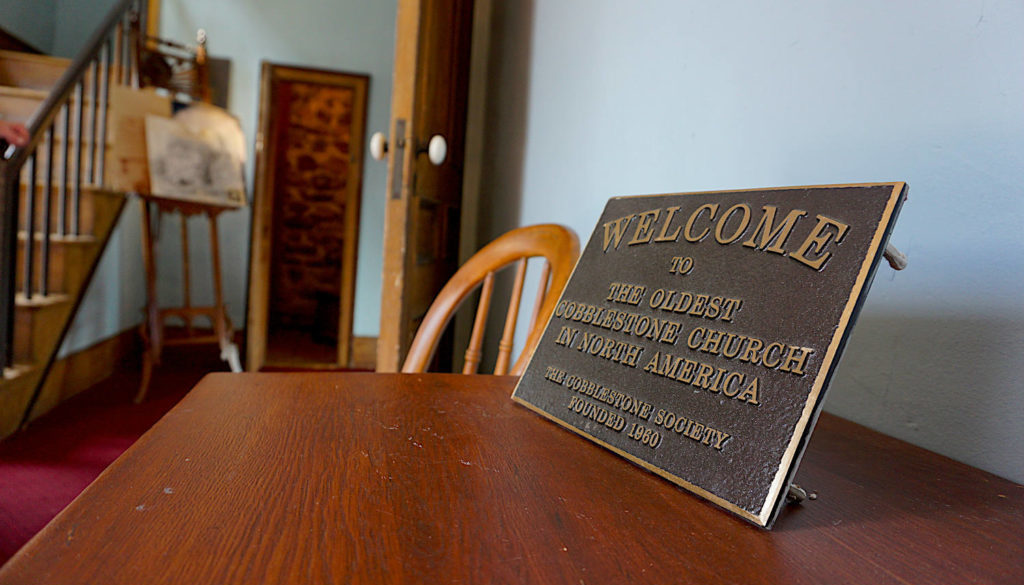

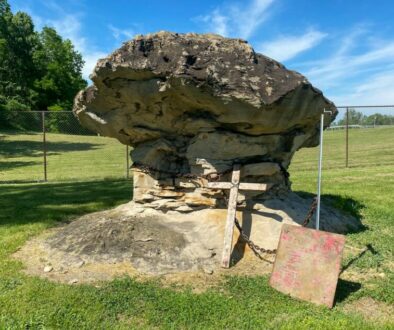
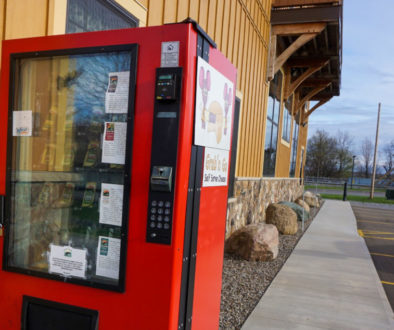

March 17, 2013 @ 3:16 pm
very interesting..thanks….
________________________________
March 17, 2013 @ 4:41 pm
Good story.
If I’m looking at it right, there are 2 wood stoves?
Looks like there’s one in each rear corner and the stove pipe from each, runs around that side and then goes to the central chimney near the altar.
Seems like in the winter, someone would have to start fires a day ahead of a service to get enough heat in the church.
And we feel chilly now with our automatic heaters.
Thanks again guys.
March 17, 2013 @ 7:47 pm
Its amazing that something decorated as simply as this is, compared to places so ornate with their Tiffany windows etc, can still be so beautiful. I love the stone front. Just think of the work that went into that! wow
March 18, 2013 @ 12:01 am
Very interesting facts about the number of cobblestone buildings in this area, compared to the rest of North America! and it’s thought-provoking that this came about because of a glacier – how Nature has shaped our history and artifacts. Thank you.
Pullman Memorial Universalist Church - Albion, NY | Exploring Upstate
May 18, 2020 @ 3:40 pm
[…] you guys know that this congregation was sort of a carry over from the congregation at the cobblestone church on Rt. 104 right? The oldest cobblestone church still standing in all of North […]
15 Cobblestone Structures in NY | Exploring Upstate
July 11, 2020 @ 6:16 pm
[…] The Universalist Church built 1834 that is now part of the Cobblestone Society and Museum just north of […]